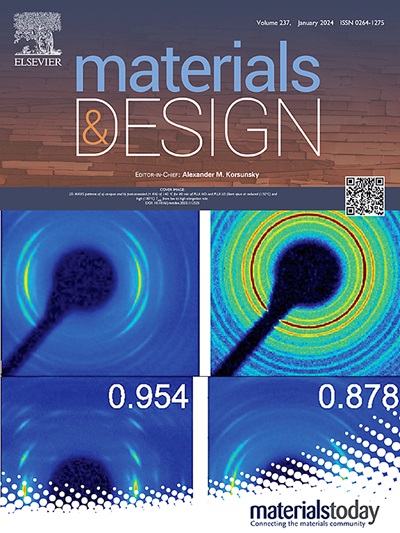Effect of tranexamic acid-functionalized photothermal hydrothermal treated oxidized graphene sponge on diabetic wound healing: Hemostasis, antibacterial, and regeneration
IF 7.6
2区 材料科学
Q1 MATERIALS SCIENCE, MULTIDISCIPLINARY
引用次数: 0
Abstract
In the healing process of chronic diabetic wounds, a prolonged inflammatory phase and an increased number of inflammatory cells consuming large amounts of oxygen create a hypoxic environment around the wound. Under such conditions, prolonged hypoxia inhibits angiogenesis and extracellular matrix (ECM) synthesis, reducing the nutrient supply to the injured area, thereby impeding further healing. Therefore, promoting tissue vascularization and enhancing nutrient delivery are crucial for facilitating tissue repair processes. To address this issue, we developed a graphene oxide (GO)-decellularized dermal matrix sponge (PGO0.35T1) with photothermal bath functionality. Through photothermal conversion, this sponge not only enhances cellular adaptation to oxygen and remodels the local tissue microenvironment, effectively regulating cellular metabolism, but also absorbs substantial light energy, achieving bacterial eradication via localized hyperthermia. Additionally, owing to the modification with tranexamic acid, this extracellular matrix sponge exhibits excellent hemostatic properties. In vitro experimental results demonstrated that the three-dimensional sponge scaffold possessed favorable cell adhesion, biocompatibility, and bioactivity. In a rat diabetic wound model, the PGO0.35T1 sponge scaffold effectively and continuously interacted with the wound, mimicking the role of natural skin, preventing the loss of internal nutrients, and creating a comfortable and conducive microenvironment for tissue regeneration. Furthermore, it enhances epithelialization by increasing the number of microvessels in the skin. Thus, this oxygen-rich short-fiber sponge with photothermal bath functionality regulates cellular metabolism, offering a novel approach for diabetic wound repair through its antibacterial, photothermal, and metabolic-improving properties, with significant clinical implications.

求助全文
约1分钟内获得全文
求助全文
来源期刊

Materials & Design
Engineering-Mechanical Engineering
CiteScore
14.30
自引率
7.10%
发文量
1028
审稿时长
85 days
期刊介绍:
Materials and Design is a multi-disciplinary journal that publishes original research reports, review articles, and express communications. The journal focuses on studying the structure and properties of inorganic and organic materials, advancements in synthesis, processing, characterization, and testing, the design of materials and engineering systems, and their applications in technology. It aims to bring together various aspects of materials science, engineering, physics, and chemistry.
The journal explores themes ranging from materials to design and aims to reveal the connections between natural and artificial materials, as well as experiment and modeling. Manuscripts submitted to Materials and Design should contain elements of discovery and surprise, as they often contribute new insights into the architecture and function of matter.
 求助内容:
求助内容: 应助结果提醒方式:
应助结果提醒方式:


